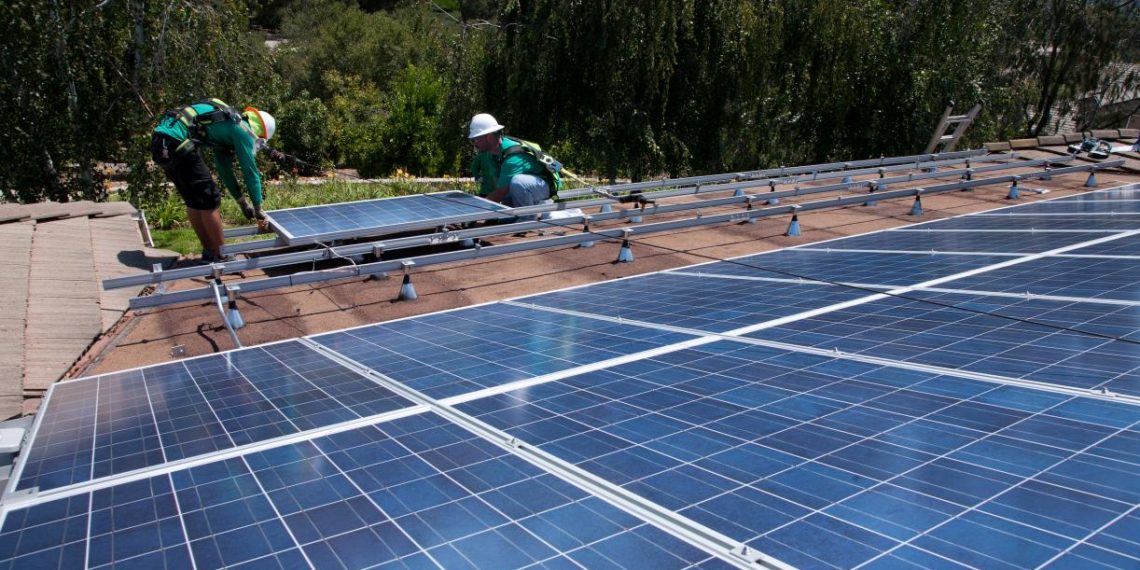The international Paris Agreement on climate change is structured around country-by-country commitments. These fundamental building blocks are known as Nationally Determined Contributions, or NDCs, and they include actions on mitigation, adaptation and other climate goals. While many NDCs are impressive and serious, existing NDCs will need to be enhanced to allow us to reach the temperature goals stated in the Paris Agreement.
But there’s another very important factor here. Countries can only fulfill their NDCs if the necessary financing is available. Yet by and large, it’s not.
In our report, Paying for the Paris Agreement, we sought to understand how NDCs are being financed — what strategies and tactics are being used and what the results are. While it is clear that current financial flows are not enough, a wide range of tools are available to scale up investment in national climate action.
Where We Are Now
When countries identify climate goals, they should make corroborating plans for funding them. Just over half (58%) of the developing countries stated in their NDCs how much they estimate it will cost to finance their commitments. Collectively, the costs come to around $4.3 trillion (with cut-off dates ranging from 2025-2040). More than half of this sum is identified as spending for mitigation goals ($2.7 trillion), and a quarter ($1.1 trillion) is devoted to adaptation. Around $500 billion is unspecified. These bottom-up estimates can be compared with much higher top-down estimates that show that $5 trillion ($1.25 trillion in public finance, $3.75 trillion in private finance) per year will be needed across all countries. Meanwhile, recent finance figures show only $803 billion was spent annually on average in 2019/2020.
How can countries close the gap? For some, their investment capacity is contingent on receiving financing from richer countries. Developed countries must do much more to deliver this kind of finance.
However, all countries – regardless of their national wealth or income – have levers they can control themselves. These levers for raising finance to implement NDCs fall into three categories: 1) aligning existing public finance with climate goals, 2) raising new public funds for climate action 3) and shifting and mobilizing private finance.
Aligning Public Finance with Climate Goals
Governments across the world make trillions in investments annually. Putting the weight of this government spending behind climate action can go a long way towards raising finance for NDCs.
Green procurement standards, for example, can be a powerful instrument to align public finance with NDC targets. In 2018, $11 trillion was spent on public procurement (around 12% of global GDP), illustrating the size of the opportunity. Procurement standards can ensure that government purchases, including purchases of goods such as appliances, services such as transportation, or works including roads and buildings, support a country’s climate goals.
For example, at COP27, the United States announced a Federal Supplier Climate Risks and Resilience Rule, which would require major federal contractors to publicly disclose their GHG emissions and climate-related financial risks, and to set science-based emissions reduction targets. Currently 33 countries either have some form of green procurement policies in place or have policies under development.
Fossil fuel subsidy reform offers another opportunity to align public finance with NDC goals. In 2009, the G20 committed to “phase out and rationalize over the medium-term inefficient fossil fuel subsidies,” while in May 2022, the G7 committed to eliminating inefficient fossil fuel subsidies by 2025. However, between 2017–19, the G20 have continued to provide, on average, $584 billion in annual support for the production and consumption of fossil fuels at home and abroad. Phasing out fossil fuel subsidies could have a direct impact on removing emissions and liberating funding that could be directed to NDCs’ implementation.
Increasing Public Finance for NDC Implementation
In addition to aligning current spending, countries will need to raise significant new capital to support implementation of their NDCs. Additional public finance for this purpose can be raised through a number of potential mechanisms.
For developing countries, international public finance from the international climate funds (such as the Green Climate Fund and Adaptation Fund), development banks, bilateral aid agencies and similar institutions provide one important source of new finance. The climate funds, in particular, were created to help developing countries pay the costs of transitioning to low-carbon and climate resilience economies.
For many countries, though, public international climate finance will not be enough to meet their financial needs – including developed countries who need to contribute to and not draw from these sources.
Public entities frequently turn to bond markets to raise capital, particularly in developed and emerging economies. More than two-thirds of the $10 trillion new bond market in 2020 came from the public sector. Some governments have begun to issue bonds to raise climate-aligned debt to fund new investments in renewable energy or resilient infrastructure. For example, Fiji launched a sovereign green bond in 2017 raising $50 million that was used to fund access to water for 120 rural communities, rehabilitate more than 1,000 schools following a cyclone, and plant more than 2,000 trees for carbon sequestration.
To raise additional domestic resources, more than 60 countries have developed national climate funds. These funds have the purpose of supporting climate goals by channeling and blending national and international resources. They are often capitalized in part by domestic fees, taxes and levies. For example, Rwanda’s National Fund for the Environment has raised nearly $176 million from domestic fees and fines as well as from international climate funds.
Finally, in light of the increasing debt distress facing many countries, fueled in part by the pandemic and high inflation, debt-for-climate swaps are receiving increased attention as a potential mechanism for developing countries to raise climate funds. While actual swaps are still few and far between today, Belize recently conducted a debt conversion with support from The Nature Conservancy to free up funds that will be invested in the protection of marine areas.
Shifting and Mobilizing Private Finance
Finally, governments play an important role in mobilizing and regulating private sector finance. In most countries, the private sector is larger than the public. Aligning private sector flows with a just transition to a low-carbon, climate-resilient economy is therefore vital.
There are several instruments that governments can use to shift private sector behavior from business-as-usual to climate compatibility. These include both “carrot” and “stick” approaches, as well as blends of the two.
An example of a “stick,” which punishes climate-negative economic activity, is carbon pricing. Many countries and sub-national governments price carbon, most commonly through emissions trading systems (ETS) or carbon taxes. By 2021, carbon pricing initiatives covered 21% of global emissions, though only 4% are covered by a price that is high enough to align with holding global temperature rise to well below 2 degrees C (3.6 degrees F), the temperature goal of the Paris Agreement. Among those with a more ambitious price on carbon is Uruguay, which implemented a carbon tax on liquid fuels (such as gasoline) earlier this year.
Tax credits, which incentivize climate-smart investments, are an example of a “carrot.” Tax credits are a major part of the United States’ Inflation Reduction Act, passed earlier this year. For example, under this new law, homeowners can get a 30% tax break for making efficiency upgrades or solar panel installations in their houses. Loan guarantees and public-private partnerships are the other examples of incentives that governments can use to mobilize private sector spending in implementing NDCs.
Countries Must Take Immediate Action to Finance Their NDCs
The time to act is now, and yet action remains too slow and too limited. It is clear that a one-size-fits-all approach will not work. Different countries have different levels of financial responsibility and will use different sets of instruments to finance their NDCs (and in the case of developed nations, help finance the NDCs of other countries). But with gaps in the trillions of dollars, we must work together urgently to make use of the tools available to shift public and private finance toward national climate goals, Each country must weave together a variety of instruments to meet its needs.


